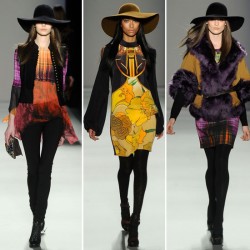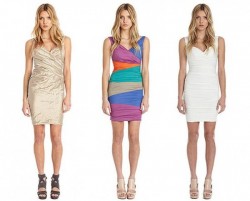One of the questions we, as sales agents, often come across in advising designers is: “How edgy should (or can) my collection be?” Designers are creatures of the future. The very best possess a keen drive to show the world something new, something different. To tease. To provoke. To infatuate.
On the other side, buyers often say in our appointments: “This is too directional, this is too edgy, this is too forward for our clients” or the opposite: “I feel like I’ve seen this before, this has been done already, I have this in my store, this reminds me of … [fill in the blank]…”
Like most difficult questions in life, the secret to the “right” answer is: to achieve the right balance. And to remember to put yourself – even for just for a minute – in the place of your prospective buyer.
Though the fashion retail environment is now on the upswing in the US, buyers’ recent memories of leaner times keep them wanting to err on the safe side. For this reason, a lot of contemporary boutiques focus their buying on collections from tried-and-true brands. Think: Nicole Miller, Trina Turk, Alice & Olivia, etc.
Where’s the disconnect?
Big fashion houses sell us dreams through their elaborate runway shows and through their out-of-this-world styles, their visions of life and beauty that stir our imagination. Boutique buyers depend on those stories and look to them for inspiration. However, buyers still tend to select much more palatable interpretations of trends when they do their actual buying. Why?
Price point is one big consideration when it comes to buying, alongside the collection’s “edginess”. In general, buyers agree that more design means more retail dollars. So we might think that the more design per piece, the more appeal to retailers. But once the price starts creeping up beyond what a boutique’s usual clients are used to paying, retail sales drop off. This means that one of the most critical challenges for the emerging designer is to try and offer the best, and most competitive, ratio of design, edge, and price point. That’s the best way to win over buyers and ensure your pieces will have a solid sell-through, even for a brand that is unknown.
Of course, there are special cases. We like to call the light at end of this tunnel the “love” factor – when a buyer just falls in love with a dress or immediately sees it as being perfect for a specific customer, or occasion, or a story that she’s creating for the season. When that happens: the sky’s the limit! Then, all doors open and price point becomes much less of a factor.
But, would we recommend the “love” factor strategy as the sustainable way to construct a collection for a new brand that is breaking into the market? In other words, should the designer include only pieces that evoke strong reactions?
We don’t think so.
The large majority of buyers shy away from those collections, not wishing to be “pioneers”. They’d rather wait until the collection is picked up by other boutiques to see how it performs, before they bet on it. This means that you are likely going to end up with a very narrow slice of the market that will place orders. With these small volumes, it can be extremely difficult for designers to produce and cover all overheads and earn a profit, even if the few items that sold were at very high price points.
In general, we believe the path to success for the emerging designer relies on a more analytical approach to merchandising and structuring their collections – both to show their ability to produce fashion-forward pieces, while tickling buyers’ imagination, and to offer buyers a solid core collection developed with a boutique’s customer in mind, offering competitive styles at competitive prices.
More on this in June.




About The Author: BridgeShowroom
Ken Nachbar is a co-founder and partner in Bridge Showroom. Ken loves working with designers, helping them open new doors, find new customers, and grow their businesses. With bachelor's degree in economics and an MBA from the University of Michigan, Ken combines 25 years of management skill and experience with his passion for fashion.
More posts by BridgeShowroom